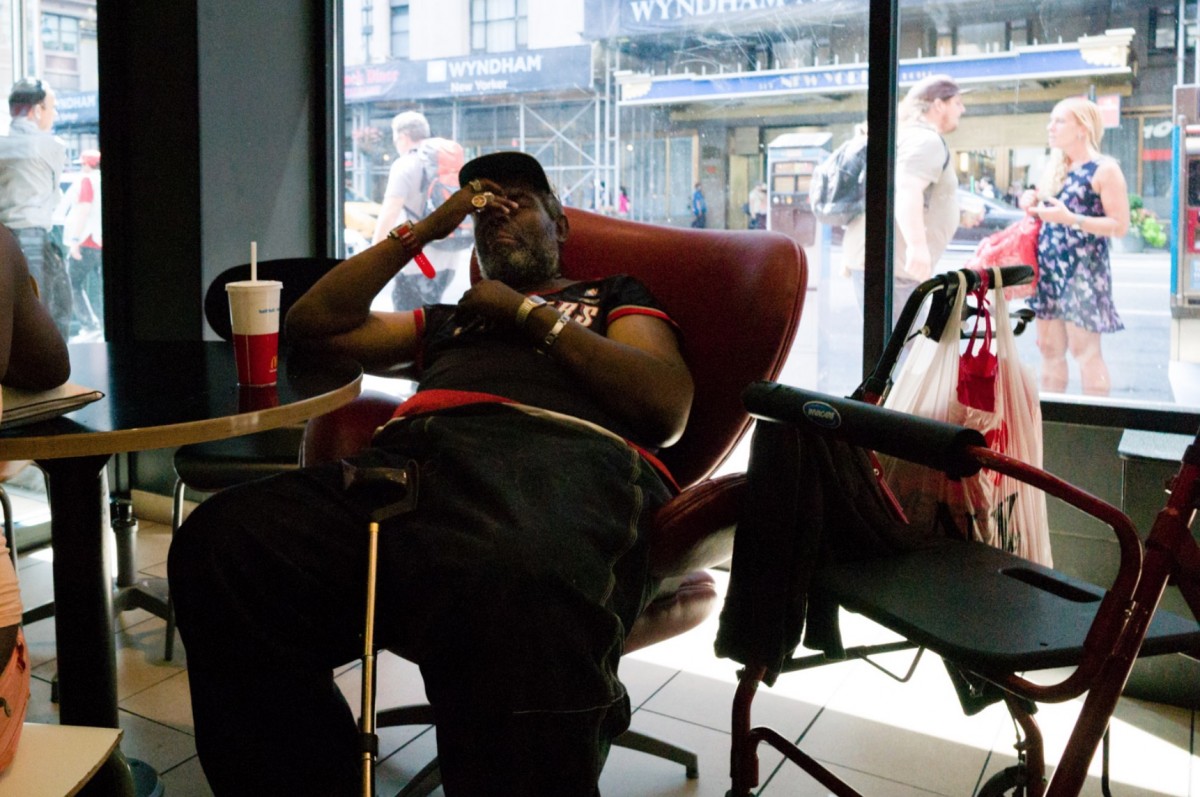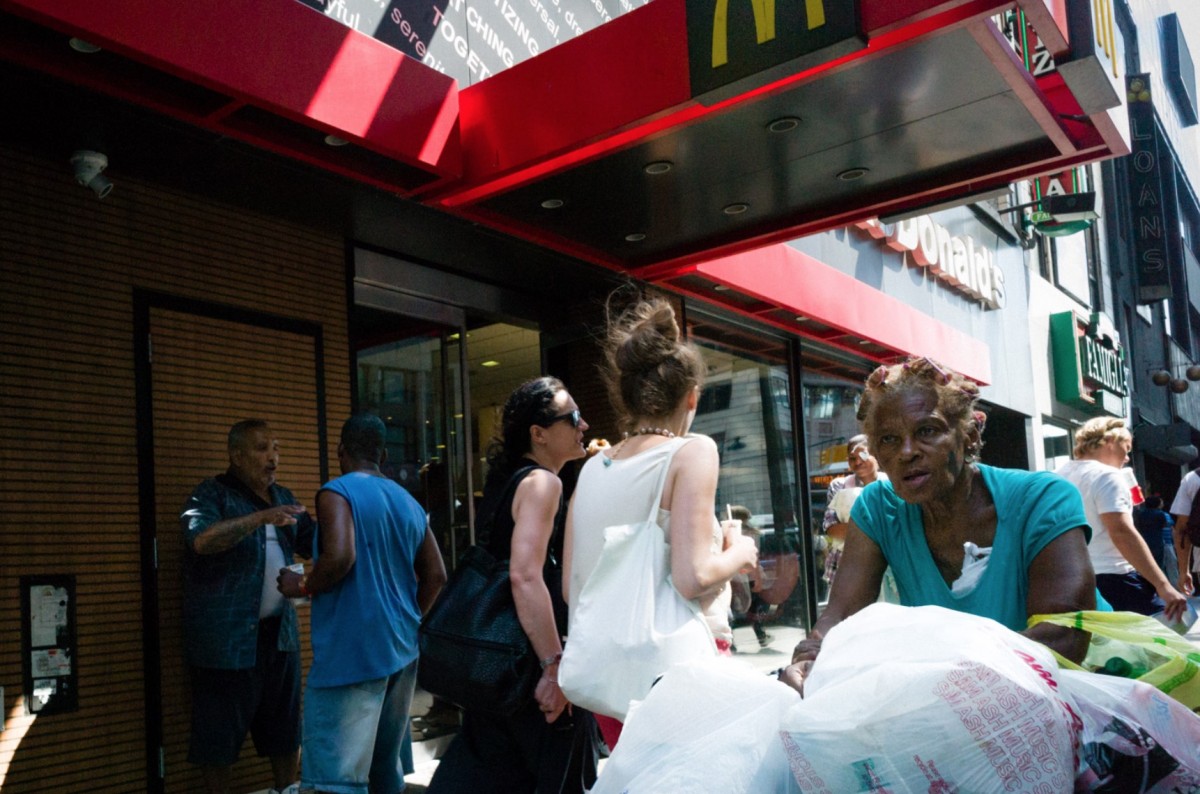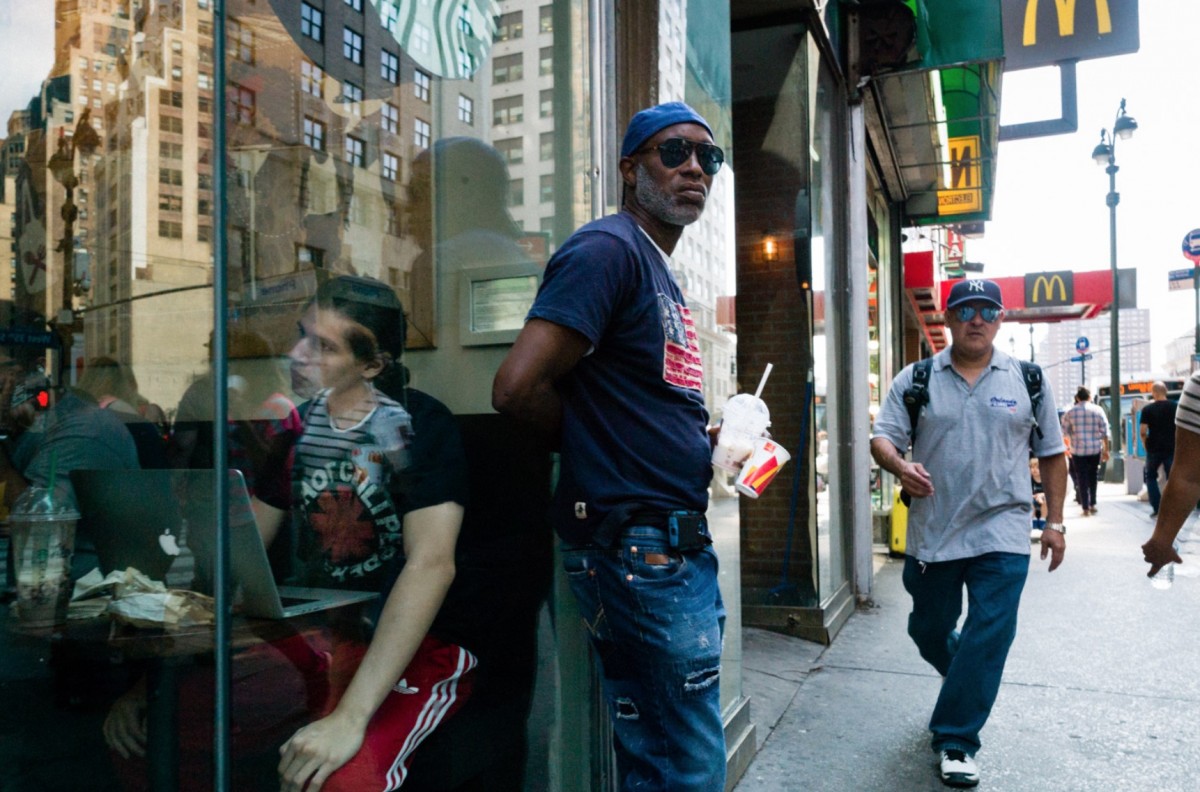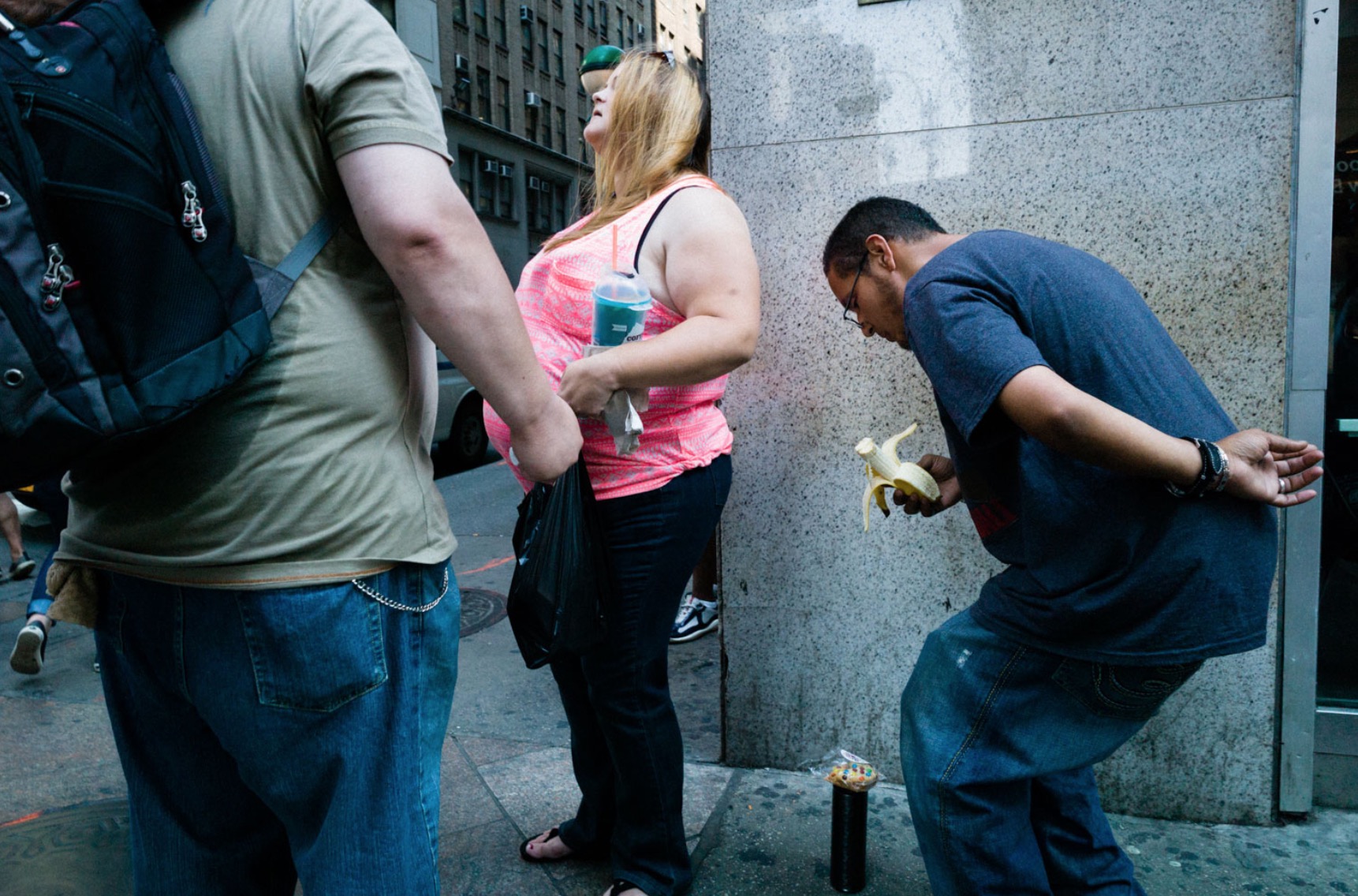Curious citizen photographer corroborates a New York Times Story
In July The New York Times published a profile of a hardluck McDonald’s in midtown Manhattan sometimes referred to by locals as the “zombie McDonald’s” for its regular customers, many of whom are drug addicts.
I was intrigued by the writer’s description of what she found here: “People openly buying, selling, and consuming drugs and alcohol inside a McDonald’s.” The Times reported that within a few blocks of the restaurant there are two outpatient substance abuse programs, one a methadone clinic, the other a needle exchange. Meanwhile, right out the front door is a pickup/drop-off point for a popular tourist double-decker bus. The restaurant’s bathrooms must remain unlocked and accessible to the steady influx of tourists. Combine this with McDonald’s “Dollar Menu” and a relatively comfortable place to escape the weather and you’ve created what a Yelp contributor wrote is a “drug addict’s paradise.”
As a New York City-based photographer concerned with social issues, I often reference The New York Times’ Metro section to identify places that might be of photographic interest. I noticed the seediness of this particular block long before the Times ran the story, but reading it piqued my curiosity enough to go deeper.

I decided to see it and document it myself. [inlinetweet prefix=”” tweeter=”” suffix=””]I propose more photographers go out and fact-check stories from the mainstream media[/inlinetweet]. You might learn something new, you’ll definitely hone your skills, and you’ll be holding the press accountable for its claims.
So, camera in hand, I spent a few hours over the course of several days at the so-called “junkie McDonald’s” nursing coffee like the regulars, watching, listening, and stealing shots.
I used a Leica M9 rangefinder camera, a perfect digital tool for this sort of “fly on the wall” photography. The preferred camera of legends like Henri Cartier-Bresson, Ernst Leitz II, and Robert Capa, Leica became synonymous with the golden age of reportage. Their cameras are built strong enough to literally survive a war and yet are substantially smaller than SLRs. They utilize a fast and accurate focus system that allows a skilled photographer to shoot “blind” when necessary, i.e. not having to look through the viewfinder. Leica brought this tried and true analog technology into the digital realm with their M8, M9, and M rangefinder cameras, combining speed and size with the instantaneous feedback of digital imaging.

I can attest to the Times‘ writer’s observations that the police and McDonald’s management’s efforts to erase the drug scene there appear futile. However what The New York Times article glosses over is that while this McDonald’s is somewhat an anomaly among fast food restaurants, it is consistent with that can be seen in the still gritty axis between Penn Station and the Port Authority Bus Terminal. Perhaps because of the high volume of transient traffic and concentration of homeless shelters, this area has proven somewhat resistant to the rampant gentrification of the West Side. Within this little pocket remains images of poverty that contrast with the picture of today’s wealthy Manhattan.
[inlinetweet prefix=”” tweeter=”” suffix=”says @bennettcain”]This McDonald’s is a reminder that New York’s prosperity has left many behind[/inlinetweet]. It also harkens to a time when the city was a far more raw and visceral place, a place where visibly desperate people weren’t concentrated in a few small areas, but a fixture across much of the city.

So get out there with your still camera, your video cameras, your phones, and your notebooks and take a story you might read in the morning paper or on your social feed and investigate it for yourself. Try to take it to the next level.
Bennett Cain is a film & television camera technician now freelancing as a multimedia journalist. On the front lines of the digital filmmaking revolution since the early days, he developed his critical eye for photographic images on hit shows such as HBO Girls, FX Louie, and Starz Power.





